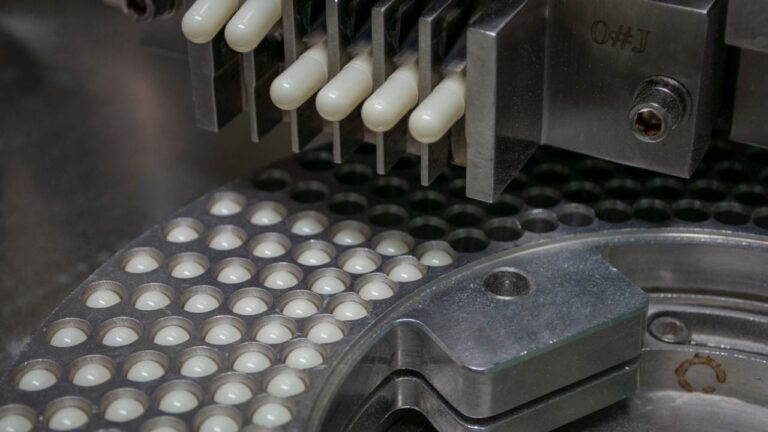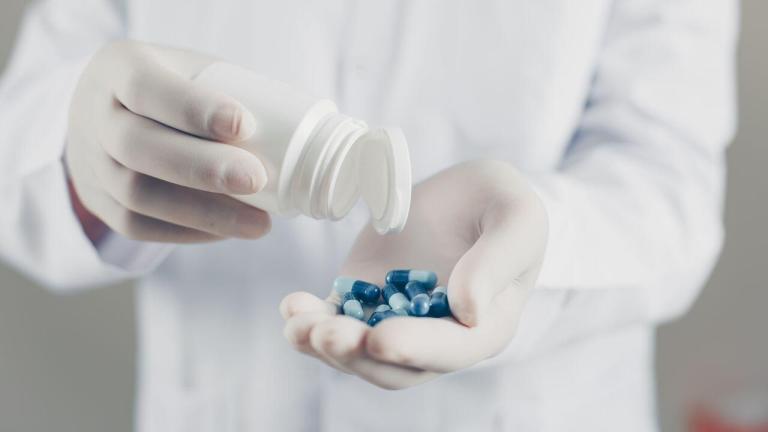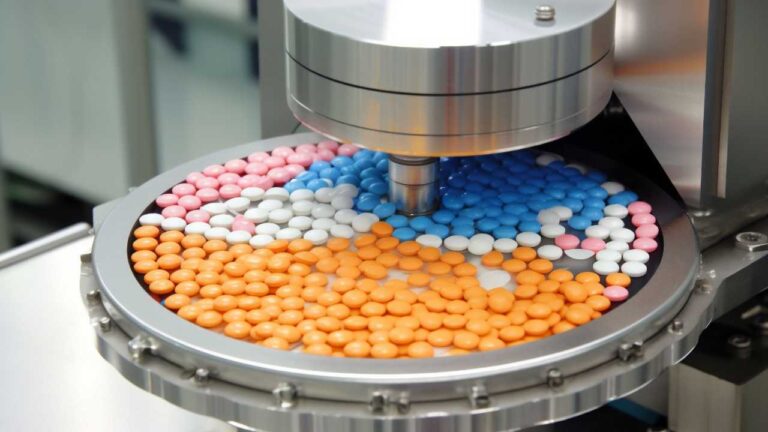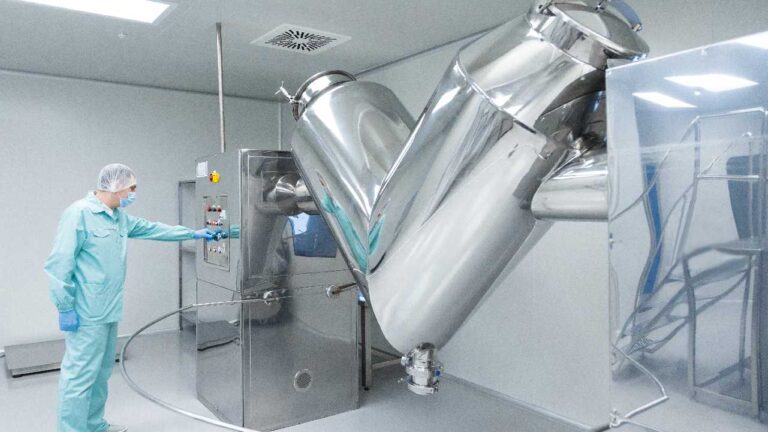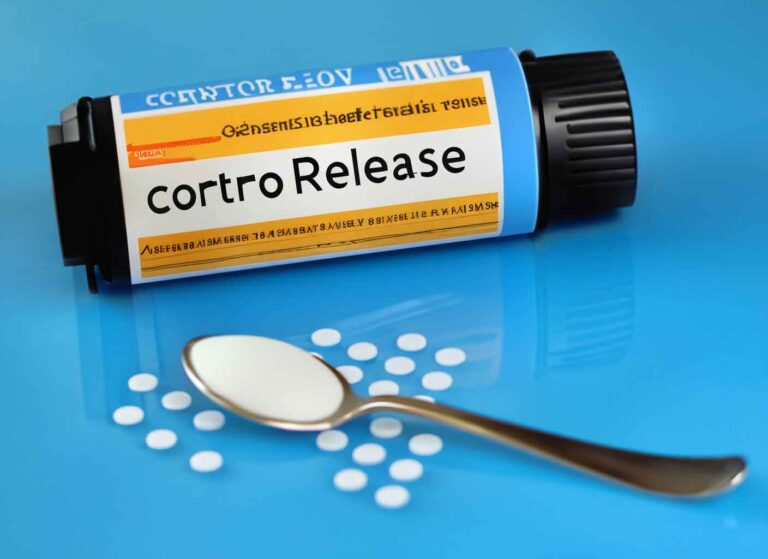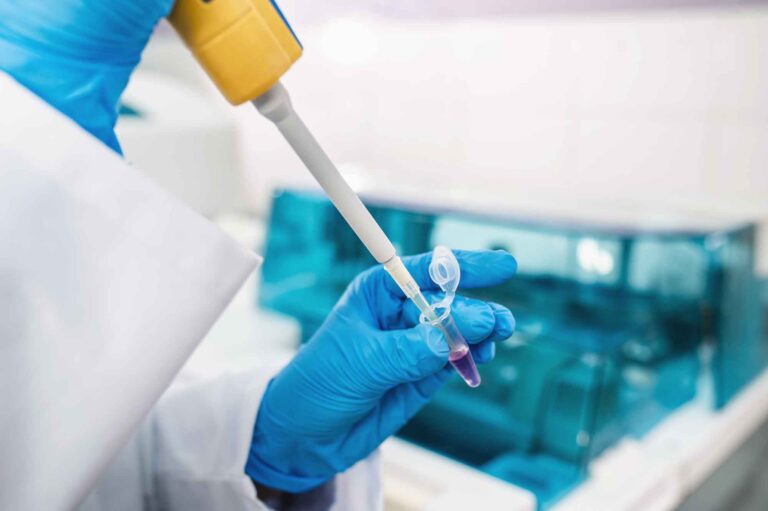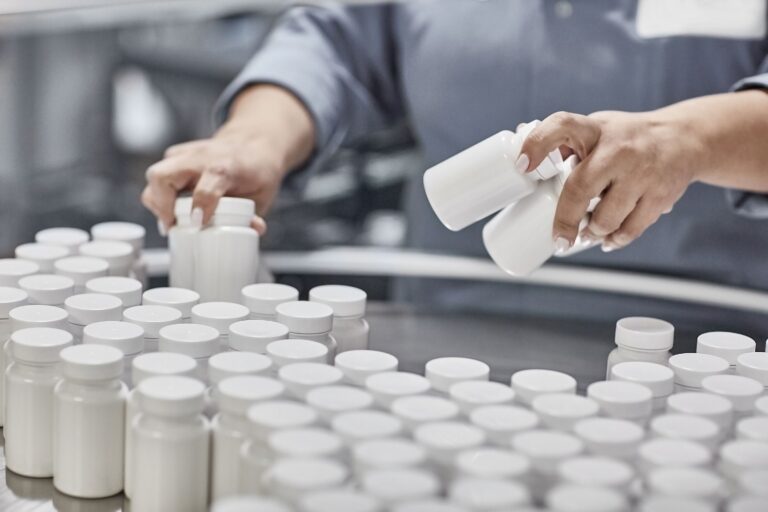An Investigational New Drug (IND) program is the first step towards conducting clinical trials with a new drug. This program is a regulatory requirement in the United States, mandated by the U.S. Food and Drug Administration (FDA), to ensure that a new drug candidate is sufficiently safe and effective for human testing.
The IND application is a comprehensive dossier that the FDA reviews to grant permission to transport the investigational drug across state lines and administer it to humans. The application must be robust, containing exhaustive data from animal pharmacology and toxicology studies that demonstrate the drug’s safety profile. These studies should adhere to Good Laboratory Practice (GLP) standards to ensure the reliability and integrity of the data.
Furthermore, the application must detail the manufacturing information, which includes descriptions of the methods used to produce the drug substance and the drug product, ensuring they meet the quality standards appropriate for human trial subjects. This section of the application also covers the controls in place for the manufacturing process and the specifications of the drug substances and products.
Clinical protocols are another essential component of the IND application. They outline the design of the proposed clinical studies, including their objectives, methodology, statistical considerations, and the mechanisms in place to protect the safety of the trial participants.
Investigator information is also required, providing details about the qualifications of the clinical investigators who will be responsible for the conduct of the trials. This ensures that the studies are led by individuals with the necessary expertise and experience.
Hycon, with its dual facilities in New York, offers Chemistry, Manufacturing, and Controls (CMC) support for your IND application. This support extends from the initial drug discovery phase through the entire process of drug development, ensuring that every aspect of the CMC requirements is addressed with precision and in compliance with regulatory standards.
Hycon’s capabilities are further enhanced by its integrated network spanning USA and Asia, specializing in GLP-compliant toxicology and pharmacology testing, as well as API synthesis. This network facilitates a seamless transition from preclinical studies to clinical phases, providing a streamlined pathway for drug development.
Inhouse we excel in formulation development, where the focus is on creating drug products with optimal delivery mechanisms to enhance bioavailability and patient compliance. The company also specializes in drug product manufacturing, where the emphasis is on producing final drug products that meet the stringent quality standards required for clinical trials and eventual market release.
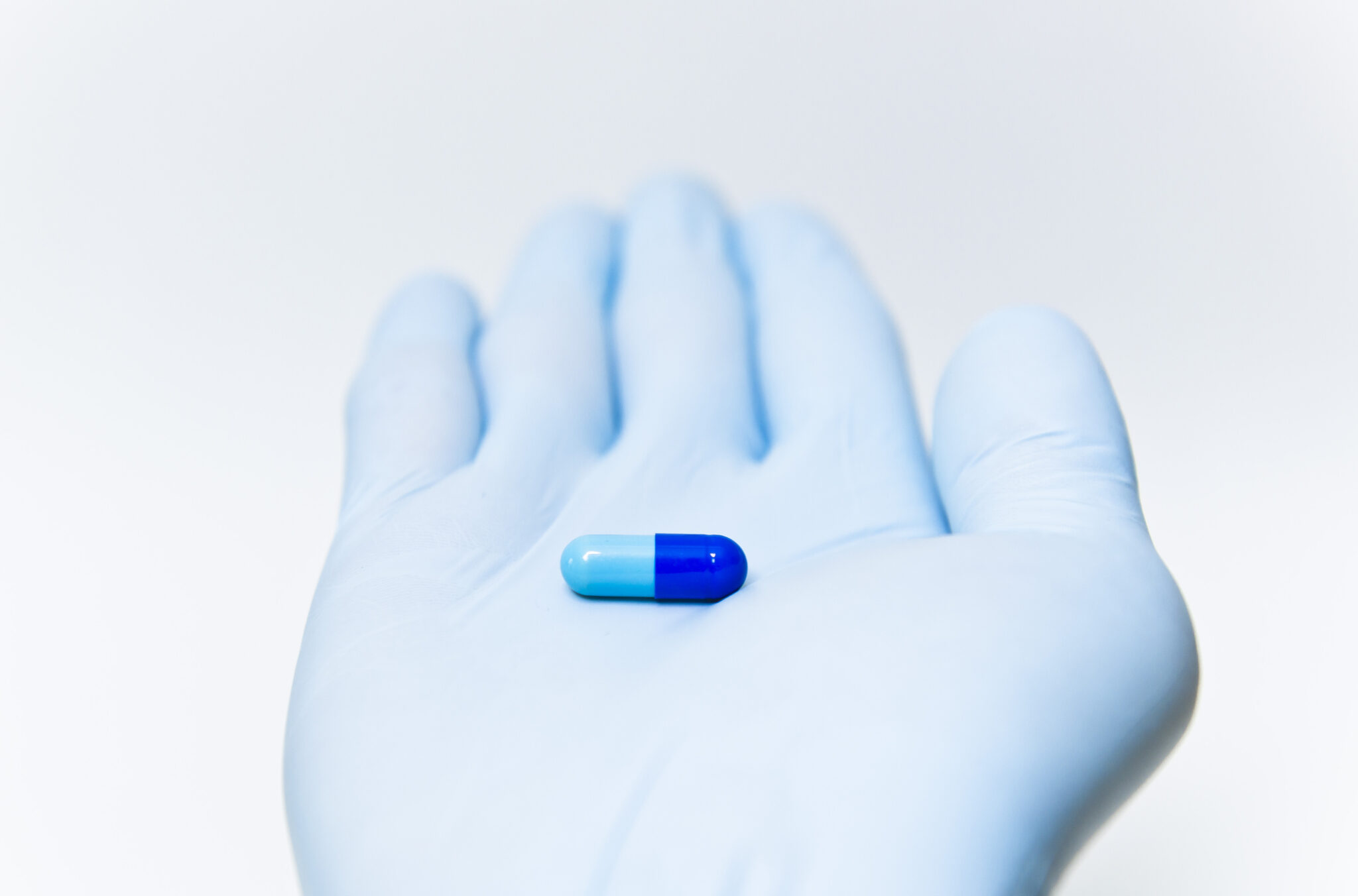
Preparing for a Successful Investigational New Drug (IND) program
Extensive Timeframe for IND Program Preparation: The path to initiating an IND program is a long and intricate one, often extending up to 18 months or more. This timeframe is not arbitrary; it is a calculated period that allows for the meticulous development of analytical methods, the production of investigational new drug batches, and the characterization of these batches to ensure they meet the stringent requirements for preclinical testing. The process is iterative and involves refining methods and production processes to achieve the highest quality of the investigational drug.
In-Depth Understanding of the Therapeutic Target: The foundation of any IND program lies in the profound understanding of the therapeutic target. This encompasses a comprehensive grasp of the biological pathways involved, the pharmacodynamics and pharmacokinetics of the drug, the disease pathology, and the expected therapeutic outcomes. It is this knowledge that informs the design of the clinical trial, including dosing regimens, treatment durations, and endpoints. Moreover, it guides the selection of relevant safety assessment studies, which are indispensable for the authorization of first-in-human trials.
Strategic Alignment of Preclinical and Clinical Strategies: The strategic alignment between preclinical and clinical development phases is a critical factor in the seamless progression of an IND program. This alignment ensures that the data generated during the preclinical phase can be effectively translated into the clinical setting. It also allows for a flexible yet structured approach to accommodate any necessary modifications based on emerging data without compromising the program’s goals.
Thorough Preparation and Preliminary Testing: Prior to the commencement of pivotal IND-enabling studies, significant time should be dedicated to preparation and preliminary testing. This phase includes the development of robust manufacturing processes and the thorough characterization of the test article. These preliminary steps are crucial for the success of IND-enabling studies, as they lay the groundwork for the subsequent stages of drug development.
Comprehensive Interactive Questions for IND-Enabling Studies Planning: When planning for IND-enabling studies, it is essential to consider a set of comprehensive interactive questions that address the core aspects of drug development:
- Test Article Supply: Ensuring an ample supply of the test article throughout the development stages to prevent it from becoming a bottleneck.
- Strategic Consistency: Maintaining a consistent strategy across nonclinical and clinical stages to ensure coherence and continuity.
- Timely Milestones: Establishing clear timelines for IND submission and the initiation of clinical trials.
Collaboration with a CDMO for Custom IND Studies: Partnering with a Contract Development and Manufacturing Organization (CDMO) that provides a broad spectrum of services and possesses leading expertise can be instrumental in the timely and budget-conscious execution of IND-enabling programs. A CDMO can offer customized solutions for each exploratory IND-enabling study, tailored to the specific characteristics of the drug, its administration route, and the clinical indication.
Why an IND Application is Necessary
The IND Application: A Closer Look
The Investigational New Drug (IND) application is a pivotal document that marks the transition from preclinical development to the possibility of clinical trials in humans. It is a request for authorization from the FDA to administer an investigational drug to humans and is the result of a successful preclinical development program. The IND application must be clear, detailed, and thorough, as it is the basis upon which the FDA grants permission to proceed with human trials.
Components of the IND Application
The IND application is divided into three major sections:
- Animal Pharmacology and Toxicology Studies: This section provides detailed information about the pharmacological effects of the drug and its toxicological profile in animals. These studies must be conducted according to Good Laboratory Practice (GLP) regulations.
- Manufacturing Information: This includes the composition, manufacturer, stability, and controls used for manufacturing the drug substance and the drug product. This information ensures the product’s identity, strength, quality, and purity.
- Clinical Protocols and Investigator Information: It contains the detailed clinical protocol for each study to be conducted under the IND, as well as information about the qualifications of the clinical investigators, particularly their ability to conduct the investigation safely and effectively.
The FDA Review Process
The FDA review process is designed to protect the public by ensuring that:
- The drug is reasonably safe for initial testing in humans.
- The clinical trial protocols are scientifically sound.
- The clinical investigators are qualified to fulfill their clinical trial duties.
- The rights, welfare, and safety of the trial subjects are protected.
Post-Submission Activities
After the IND is submitted, the sponsor must wait 30 days before initiating any clinical trials. During this time, the FDA reviews the IND for safety to ensure that research subjects will not be subjected to unreasonable risk.
Clinical Trials: Phases I-III
Clinical trials are conducted in phases, each with a different purpose:
- Phase I: These trials are the first stage in testing a new drug in humans, focusing on safety, dosage range, and side effects.
- Phase II: The drug’s effectiveness and further evaluation of its safety are tested in a larger group of people.
- Phase III: These trials confirm the drug’s effectiveness, monitor side effects, compare it to commonly used treatments, and collect information that will allow the drug to be used safely.
Nanoparticle Technology in Drug Delivery
Nanoparticle technology is revolutionizing drug delivery by offering solutions to many challenges faced in pharmaceutical formulation:
- Enhanced Delivery: Nanoparticles can improve the solubility and bioavailability of drugs, particularly those that are poorly soluble in water.
- Targeted Therapy: By modifying the surface properties of nanoparticles, drugs can be delivered more precisely to the intended site of action, reducing the potential for side effects.
- Controlled Release: Nanoparticles can be designed to release their payload over a specified period, improving patient compliance and therapeutic outcomes.
- Crossing Biological Barriers: Nanoparticles can be engineered to cross biological barriers, such as the blood-brain barrier, which is particularly challenging for conventional drug delivery systems.
The Future of Drug Development
The future of drug development is likely to be shaped by advances in personalized medicine, where treatments are tailored to the individual genetic makeup of patients. Nanoparticle technology will play a crucial role in this evolution, enabling the development of highly targeted and efficient drug delivery systems.
Studies Required for an IND Program
Nonclinical studies are a cornerstone of Investigational New Drug (IND)-enabling programs, providing a critical foundation for understanding the pharmacological and toxicological profile of a new drug candidate before it enters human clinical trials. These studies encompass a broad range of evaluations designed to elucidate the drug’s mechanism of action, therapeutic potential, and safety profile.
Pharmacology Studies: Pharmacology studies are bifurcated into two main categories: in vitro (test tube or culture dish) and in vivo (within a living organism).
- In Vitro Studies: These studies are conducted to assess the drug’s biological activity and its mechanism of action at the molecular level. They involve various assays and models to determine the drug’s affinity for its target, its potency, and the specificity of its interaction with the target. For example, receptor binding assays, enzyme inhibition studies, and cell-based assays are commonly used to characterize the drug’s pharmacological properties.
- In Vivo Studies: In vivo studies translate the findings from in vitro assessments into a living system, typically animal models. These studies provide insights into the drug’s efficacy, pharmacokinetics (how the drug is absorbed, distributed, metabolized, and excreted), and pharmacodynamics (the relationship between drug concentration and effect). Rodent and non-rodent species are often employed to evaluate the drug’s therapeutic effect and to establish a preliminary safety profile.
Safety Studies: Safety studies are integral to the IND-enabling process, as they aim to identify any potential adverse effects the drug may have on DNA, organ systems, and overall organismal health.
- Genotoxicity Studies: These studies evaluate the drug’s potential to cause DNA damage, which could lead to mutations and cancer. Assays such as the Ames test, micronucleus assay, and comet assay are utilized to detect various types of genotoxic effects.
- Organ Toxicity Studies: Organ-specific toxicity is assessed through histopathological examination of tissues from animals treated with the drug. These studies help identify any signs of organ damage or dysfunction that could translate to human toxicity.
- Systemic Toxicity Studies: Systemic toxicity studies provide a comprehensive evaluation of the drug’s impact on the body as a whole. They include acute, sub-acute, and chronic toxicity studies, which are conducted over varying durations to observe the effects of single or repeated dosing.
- Safety Pharmacology Studies: These studies specifically focus on the drug’s effects on vital organ systems, such as the cardiovascular, respiratory, and central nervous systems. The goal is to uncover any potential drug-induced functional changes that could pose a risk to patients.
Dose Selection for Human Trials: The culmination of pharmacology and safety studies is the determination of a safe starting dose for human clinical trials. This involves the integration of data on systemic exposure, adverse effects, and safety margins. The no-observed-adverse-effect level (NOAEL) from animal studies is often used as a reference point, and safety factors are applied to account for interspecies differences and other uncertainties.
Regulatory Considerations: Regulatory agencies, such as the FDA, require a comprehensive package of nonclinical data to support the IND application. This data must demonstrate that the drug has a reasonable safety profile and provides sufficient evidence of its potential therapeutic benefit. The nonclinical study designs and methodologies must adhere to Good Laboratory Practice (GLP) regulations to ensure the quality and integrity of the data.
In summary, nonclinical studies are a vital component of drug development, offering a window into the drug’s therapeutic promise and safety considerations. These studies are meticulously planned and executed to meet regulatory standards and pave the way for the transition from bench to bedside.
What is SEND?
The Standard for Exchange of Nonclinical Data (SEND) is an integral part of the modern pharmaceutical and biotechnological research landscape. It represents a significant advancement in the standardization of data representation, particularly in the context of nonclinical studies involving animal data. SEND is not just a data format; it’s a comprehensive framework designed to ensure consistency, reliability, and efficiency in the submission of nonclinical study data to regulatory bodies such as the Food and Drug Administration (FDA).
Historical Context and Development
SEND was developed under the auspices of the Clinical Data Interchange Standards Consortium (CDISC), which has been at the forefront of data standardization efforts in clinical research. The inception of SEND can be traced back to 2002, with the goal of creating a standardized approach to nonclinical data that aligns with the emerging standards for clinical data, specifically the Study Data Tabulation Model (SDTM).
The initial impetus for SEND’s development was provided by the FDA’s announcement of a pilot project in 2007, which sought to test the feasibility and effectiveness of standardized electronic data submissions. This project galvanized the pharmaceutical industry and led to the creation of nearly thirty domains covering various aspects of nonclinical studies, including general toxicology, pharmacology, carcinogenicity, and reproductive toxicology.
SEND’s Relationship with SDTM
At its core, SEND is an implementation of the SDTM tailored for nonclinical studies. The SDTM itself is a standard that provides a structured way to organize and format data to streamline processes in collection, management, analysis, and reporting. It supports data aggregation, warehousing, mining, reuse, and sharing, which are crucial for regulatory review and approval processes.
SEND leverages the foundational principles of the SDTM but adapts them to the specific needs of nonclinical study data. This includes the representation of individual animal data, study design, dosing information, and findings from various tests and observations conducted during the study.
Regulatory Importance of SEND
The adoption of SEND datasets has become mandatory for Investigational New Drug (IND) submissions to the FDA. This requirement underscores the importance of standardized data in the regulatory review process, ensuring that data from nonclinical studies are presented in a consistent and easily interpretable format.
The FDA’s Data Standards Catalog specifies SEND as one of the required standards for data submission for New Drug Applications (NDA), Abbreviated New Drug Applications (ANDA), and certain Biologics License Applications (BLA). The standardization facilitated by SEND allows for a more streamlined and efficient review process, enabling the FDA to better analyze and understand the data submitted as part of the regulatory dossier.
SEND Implementation and Compliance
For pharmaceutical companies and contract research organizations (CROs), the implementation of SEND is a multi-faceted process that involves the creation of validated, submission-ready SEND dataset packages. These packages must include all necessary accompanying materials, such as the Define XML Document, Define stylesheet, and the Nonclinical Study Data Reviewer’s Guide (nSDRG).
The datasets must be produced using validated systems and should be compliant with the latest versions of the SEND Implementation Guides (SENDIG). Charles River, for instance, has been using a validated system since 2015 to produce SEND datasets, highlighting the industry’s commitment to meeting these regulatory standards.
Future Directions and Updates
The SEND standard is continually evolving, with updates and new versions being released to address the changing landscape of nonclinical research and regulatory requirements. As the pharmaceutical industry moves towards more complex study designs and novel therapeutic modalities, the role of SEND in ensuring the integrity and clarity of nonclinical study data will only grow in importance. The standard’s adaptability and robustness make it a critical tool in the pursuit of scientific advancement and therapeutic innovation.
Process Chemistry
Process chemistry is a critical branch of pharmaceutical chemistry that focuses on the development and optimization of synthetic schemes and pilot plant procedures for the manufacture of compounds during the drug development phase. This field is distinct from medicinal chemistry, which is concerned with designing and synthesizing molecules on a small scale during the early drug discovery phase. Process chemists are tasked with creating a chemical process that is safe, cost-effective, environmentally friendly, and reproducible.
Hycon Labs, a Contract Development and Manufacturing Organization (CDMO), leverages its expertise in process chemistry to ensure the successful development and scalability of drug substances. The team at Hycon collaborates to develop synthetic processes that are not only efficient but also scalable and cost-effective, thereby ensuring that the drug substance manufacturing process is robust and reliable.
The development of a synthetic process involves several considerations:
- Cost Efficiency: It is paramount in process chemistry to develop a process that minimizes costs without compromising quality. This includes both material costs, which encompass the costs of raw materials, intermediates, reagents, solvents, and catalysts, and conversion costs, which relate to the actual synthesis of the drug substance.
- Ecological Impact: The environmental footprint of the synthetic process is evaluated using metrics such as the EcoScale, which assesses the ecological impact of chemical processes.
- Safety and Reproducibility: Ensuring that the process is safe for both the environment and the workers is crucial. Additionally, the process must be reproducible to guarantee consistent quality in drug substance production.
Hycon’s approach to process chemistry involves:
- Expert Collaboration: A team of experts works together to ensure the best possible outcome for the molecule in development.
- Synthetic Process Development: The focus is on creating scalable processes that can be efficiently transitioned from the lab to pilot plant and eventually to full-scale commercial manufacture.
- Robust and Reliable Manufacturing: The goal is to establish a manufacturing process for the drug substance that is both robust, ensuring it can withstand various conditions without failure, and reliable, guaranteeing consistent quality.
The expertise of Hycon’s team spans across various aspects of drug substance manufacturing:
- Small Molecule Dosage Development: The team has deep-scale expertise in developing formulations for small molecule drugs, which are the most common type of drugs in the pharmaceutical industry.
- Delivery Technologies: Hycon employs a range of techniques to increase bioavailability or achieve controlled release for challenging Active Pharmaceutical Ingredients (APIs).
- Multi-Modality Manufacturing: The organization has capabilities in manufacturing different dosage forms, including oral solid dose (OSD), creams, emulsions, liquids, solutions, films, suspensions, and injectables.
Hycon’s key achievements highlight their commitment to excellence in process chemistry:
- Cost and Time Savings: They have demonstrated significant cost savings and time reductions in the drug development process.
- Scalability: With state-of-the-art equipment and facilities, Hycon can adapt to evolving needs from early development stages to large-scale production.
- Quality Assurance: Compliance with stringent industry standards is ensured, reducing risk and guaranteeing product integrity.
- Expertise and Experience: The management team brings decades of industry knowledge, guiding programs with professionalism.
- Risk Mitigation: Potential challenges are addressed from the outset, ensuring consistent quality and regulatory compliance.
Pre-formulation
The formulation of a drug is a complex and critical process in the development of pharmaceutical products. It involves a series of studies and evaluations to ensure that the final medicinal product is safe, effective, and acceptable for patient use. Let’s delve into the details of this intricate process.
Understanding Physical and Chemical Properties: The journey of drug formulation begins with a thorough understanding of the drug’s physical and chemical properties. This includes its molecular structure, solubility, stability, and how it behaves under different conditions. These properties are crucial because they affect how the drug interacts with the body and how it can be processed into a usable form.
Polymorph/Salt Screening: Polymorphs are different crystalline forms of a drug that can have distinct physical and chemical properties. The same drug can exhibit different solubilities, stabilities, and bioavailabilities depending on its polymorphic form. Salt forms, on the other hand, are created when the drug’s ionic compounds are combined with other counterions to improve properties like solubility and stability. Polymorph and salt screening is a strategic step in early pharmaceutical development. It helps in identifying the most suitable physical form of the drug that will ensure consistent pharmacokinetic exposure and compress the development cycle.
Solubility/Physical Characterization: Solubility is a key factor in drug absorption and bioavailability. A drug must be soluble enough to be absorbed into the bloodstream but not so soluble that it fails to reach the target tissues. Physical characterization includes understanding the drug’s melting point, boiling point, and how it dissolves in different solvents. These studies are essential to predict the drug’s behavior in the human body and to design the appropriate dosage form.
Excipient Compatibility Studies: Excipients are inactive substances used in drug formulation to aid in the manufacturing process, improve stability, or enhance the drug’s delivery. However, not all excipients are compatible with all drugs. Incompatibility can lead to reduced efficacy or stability of the drug. Therefore, compatibility studies are conducted to ensure that the chosen excipients do not react adversely with the drug. These studies are a regulatory requirement and are crucial for the optimization of the dosage form, ensuring the drug’s stability, efficacy, and safety.
Formulation Development
Formulation development is a critical and intricate process in the pharmaceutical industry, aimed at creating a dosage form that delivers the active pharmaceutical ingredient (API) effectively, safely, and in a stable manner. This process is essential for ensuring that medications not only reach the market but also meet the therapeutic needs of patients while adhering to regulatory standards.
Understanding Formulation Development
At its core, formulation development is about finding the right combination and structure of a drug’s composition. It’s a multidisciplinary task that involves chemists, pharmacologists, toxicologists, and other specialists who work together to design a product that is both efficacious and patient-friendly. The process begins with the identification of the drug’s molecular properties, which include its chemical structure, solubility, stability, and bioavailability. These properties are crucial as they determine how the drug will interact with the body and how it should be delivered.
Patient-Centric Approach
A patient-centric approach is central to formulation development. Medications must be designed with the end-user in mind, considering factors such as ease of administration, taste, appearance, and potential side effects. For example, pediatric patients may require liquid suspensions due to difficulty swallowing tablets, while adults might prefer the convenience of a tablet or capsule.
Safety and Stability
Ensuring the safety and stability of the finished drug product is paramount. Formulators must select excipients that are compatible with the APIs and that protect them from degradation over time. The drug must maintain its potency and quality throughout its shelf life and must meet stringent regulatory guidelines in every country where it is distributed.
Hycon’s Role in Formulation Development
Hycon specializes in the development of various dosage forms, ranging from simple API in a bottle to more complex formulated tablets and capsules. Their expertise extends to designing dosage forms that cater to special populations, including pediatric, geriatric, and patients with dysphagia. Hycon’s approach is flexible, adapting to the evolving needs of each project, which allows for a tailored approach to dosage form design.
Dosage Forms and Technologies
Hycon’s capabilities include the development and manufacturing of tablets, capsules, softgels, minitablets, suspensions, semi-solids, orally disintegrating tablets, orally dissolving films, transdermal patches, emulsions, injectables, and inhalables. They employ various formulation technologies, such as nanotechnology platforms and lipid-based delivery systems, to improve efficacy and uniquely position products in the market. Taste masking solutions are also added to enhance the patient experience.
Collaborative Design and Regulatory Compliance
Collaboration is key in the design of optimal dosage forms. Hycon works closely with clients to evaluate critical factors that ensure the dosage form meets all necessary criteria for success. This includes a thorough analysis of physicochemical properties, ADME/PK/PD evaluation, manufacturability considerations, stability assessment, and market-driven strategy development. Ensuring regulatory compliance is also a crucial part of Hycon’s services, providing guidance on compliance matters to facilitate a smooth approval process.
Drug Product Manufacturing
The process of developing a pharmaceutical formulation and preparing it for clinical trials is a multifaceted and critical phase in drug development. It involves not only the creation of a reliable and effective product but also ensuring that the product can be manufactured at scale and meets all regulatory requirements for clinical testing.
Hycon Labs, a Contract Development and Manufacturing Organization (CDMO), plays a pivotal role in this process. With a broad range of expertise in small molecule dosage development sciences, delivery technologies, and multi-modality manufacturing, Hycon is equipped to handle the complex demands of producing pharmaceuticals for clinical trials.
Formulation Development
The journey begins with the development of the formulation. This is a meticulous process where scientists determine the appropriate combination of the active pharmaceutical ingredient (API) and excipients to create a stable and effective product. The formulation must ensure that the drug is delivered in the correct dosage, is absorbed properly by the body, and maintains its integrity throughout its shelf life.
Scaling Up Manufacturing
Once the formulation is finalized, the next step is to scale up manufacturing. Hycon has the capabilities to produce large quantities of dosage units, which can range from hundreds of thousands to millions, depending on the needs of the clinical trial. This scale-up process is critical and requires precision and consistency to ensure that each dosage unit is identical to the one produced during the formulation development stage.
The manufacturing process for oral solid dosage (OSD) forms, such as tablets and capsules, involves several steps:
- Granulation: This process creates granules from powder, which improves the flowability and compressibility of the mixture.
- Compression or Encapsulation: The granules are then compressed into tablets or filled into capsules.
- Coating: Tablets may be coated to protect the drug from the environment or to control its release into the body.
For liquid formulations, the challenges include ensuring proper mixing, solubility, viscosity, and filtration. Hycon’s capabilities cover a wide range of liquid dosage forms, including syrups, injectables, and oral solutions.
Packaging and Labeling
Packaging and labeling are the final steps before the product can be distributed for clinical trials. This stage is crucial as it must comply with stringent regulatory standards to ensure patient safety and facilitate the proper use of the investigational medicinal product (IMP).
Clinical trial packaging often includes:
- Primary Packaging: This could be bottles, blister packs, vials, or syringes, designed to protect the product and ensure its stability.
- Secondary Packaging: This includes the outer packaging that provides additional protection and includes necessary labeling information.
Labeling for clinical trials is highly regulated and must include:
- Dosage Instructions: Clear instructions on how the drug should be administered.
- Lot or Batch Number: For traceability and quality control.
- Expiration Date: To ensure the drug is used within its effective period.
- Storage Requirements: To maintain the drug’s efficacy and safety.
Hycon ensures that all packaging and labeling processes meet the regulatory requirements for clinical trials, which may vary depending on the global region where the trial is conducted.
Quality Assurance and Regulatory Compliance
Throughout the entire process, from pre-formulation to the final packaged product, Hycon maintains a rigorous quality assurance protocol. This includes compliance with current Good Manufacturing Practices (cGMP) and other regulatory standards. Their facilities are equipped with state-of-the-art equipment and are staffed by experienced professionals who oversee every aspect of production to ensure that the final product meets the highest quality benchmarks.
Analytical Services
Hycon, a prominent name in the
pharmaceutical industry, stands out for its comprehensive suite of analytical
services designed to support the development and manufacturing of
pharmaceutical products. Their analytical team, composed of seasoned experts,
is dedicated to ensuring that each phase of your program is meticulously
analyzed, thereby guaranteeing that critical milestones are met with precision.
Analytical Services Offered by Hycon:
- Material Characterization: Hycon’s material
characterization services are pivotal in understanding the properties and
behavior of materials used in pharmaceuticals. This service encompasses a
variety of tests and analyses, including mechanical performance,
composition, and changes due to processing or aging.
- Impurity Identification: The identification of
impurities is crucial for ensuring the safety and efficacy of
pharmaceutical products. Hycon employs advanced methods such as Fourier
Transform Infrared Spectroscopy (FTIR), Scanning Electron
Microscopy/Energy Dispersive X-ray Analysis (SEM-EDXA), and Gas Chromatography
with Mass Selective detection (GC/MS) to detect and characterize
impurities.
- Method Development and Qualification: Hycon’s method
development focuses on creating reliable analytical methods, while
qualification evaluates their performance to ensure they meet regulatory
criteria for the intended use. This process is essential for accurate and
consistent analytical results in pharmaceutical research and quality
control.
- Release and Stability
Testing:
Stability testing is integral to drug development, assessing degradation
and informing shelf-life prior to market release. Hycon conducts
stability studies on active pharmaceutical ingredients (APIs) and drug
products to ensure their longevity and efficacy.
Supporting IND Requirements:
Hycon provides a robust package of
supporting analytical data to facilitate compliance with Investigational New
Drug (IND) requirements. This includes detailed specifications and release data
for raw materials, intermediates, and APIs, ensuring that every component meets
stringent regulatory standards.
Master Batch Records and GMP
Certification:
To further bolster the trust in their
manufacturing processes, Hycon maintains comprehensive master batch records
(MBRs), which contain approved ingredients, formulations, and production
instructions. These records are essential for ensuring consistency and
adherence to regulatory guidelines during manufacturing. Additionally, Hycon
holds a Good Manufacturing Practice (GMP) certification, affirming that their
API production aligns with industry benchmarks for quality and safety.
Related Services






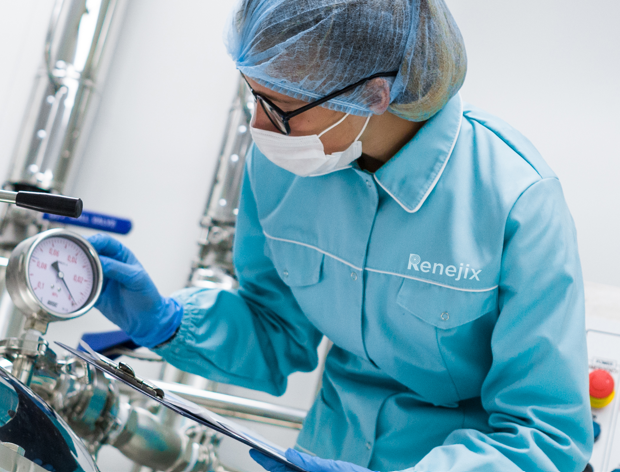

FAQs
Here are some frequently asked questions about IND Enabling Studies
.
IND Enabling Studies are a suite of preclinical services designed to support the preparation of an Investigational New Drug (IND) application. These studies typically include pharmacology and toxicology assessments, manufacturing information, clinical protocols, and investigator information. At Hycon, we provide comprehensive support to ensure your drug meets regulatory milestones.
Hycon offers a full range of services to support your IND application, including process chemistry, synthetic process development, scalable processes, and GMP drug substance manufacturing. We ensure that your molecule has the best chance of success from pre-formulation to clinical manufacturing.
At Hycon, we pride ourselves on our technology-driven approach and our ability to provide cost-effective solutions. Our expertise in formulation development for complex dosage forms and our state-of-the-art facilities ensure that we deliver quality and efficiency at every step of your drug’s journey.
Yes, we can. Hycon is equipped with over 300+ state-of-the-art equipment and facilities that can seamlessly adapt to your needs, from early development stages to large-scale production, ensuring scalability and flexibility for your project.
Absolutely. We offer strategic regulatory planning and quality assurance to ensure global compliance, streamline approvals, and support the product lifecycle. Our team is dedicated to guiding you through the regulatory landscape.
Quality is at the core of what we do. Hycon employs over 150+ analytical scientists to provide comprehensive analytical testing and method development. We ensure compliance with stringent industry standards, guaranteeing product integrity and timely market entry.
Hycon’s services are ideal for a wide range of drugs, including orphan drugs, blockbuster drugs, generics, and consumer health brand extensions. Our expertise spans across small molecule oral dosage development, ensuring we can cater to diverse pharmaceutical needs.
We have a dedicated team of scientists, engineers, and quality personnel who specialize in pharmaceutical technology transfers. We address potential challenges from development to manufacturing from the outset, ensuring consistent quality and regulatory compliance.
The first step is to reach out to us with your project details. Our client-centric business development team will work closely with you to understand your requirements and provide a customized proposal that aligns with your goals for quality, insight, timely delivery, and competitive pricing.


